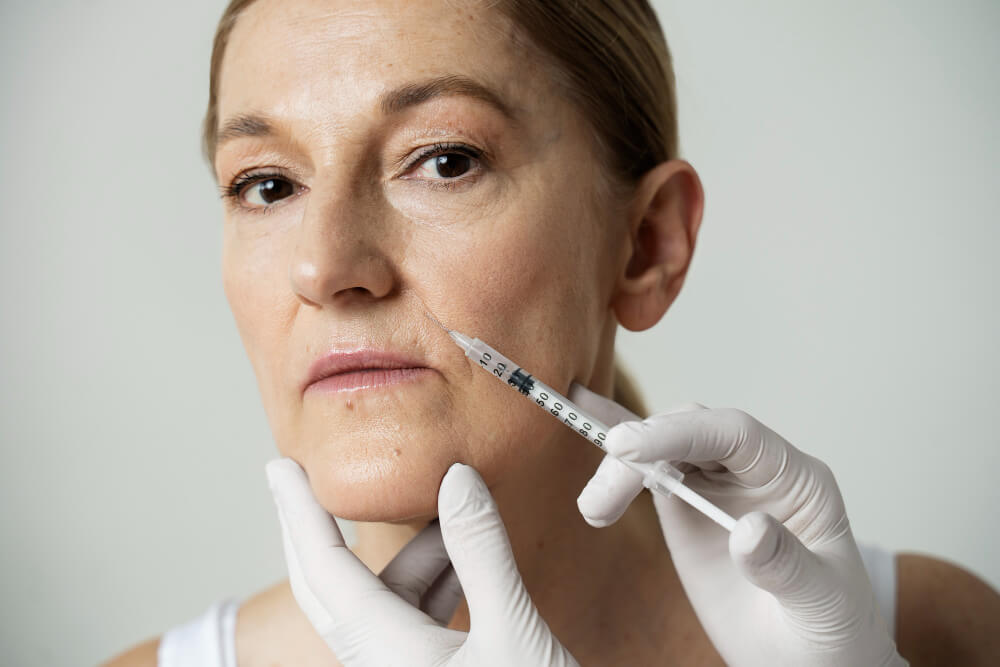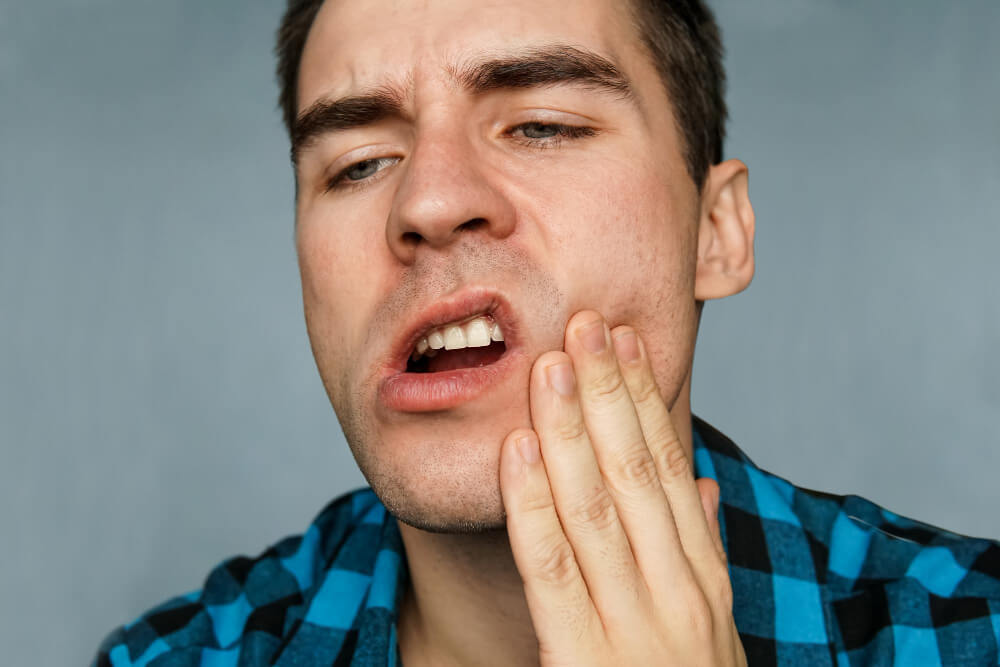The article seeks to equip practitioners with the knowledge and strategies to optimize outcomes and minimize adverse events associated with Juvederm treatments by prioritizing patient safety and proactive risk management.
Dermal filler granulomas are severe but rare adverse reactions characterized by localized inflammatory nodules at the injection site. These granulomas can develop as a response to the filler material or due to an infection, immune reaction, or foreign body response. Prompt recognition and management by a qualified healthcare professional are essential to address dermal filler granulomas effectively and minimize potential complications.
Juvederm granuloma is a tricky issue that some doctors face after using dermal fillers. There’s advice on starting treatment early and options beyond simple fixes, sometimes even surgery. With the proper care over time, most people get better. We also stress talking clearly with patients about what fillers involve before starting any treatment.
This article aims to teach medical professionals how to spot, stop, and fix this problem. This keeps patients safe and cuts down bad results from Juvederm treatments.
Key Takeaways
- Knowing where to buy Juvederm from trusted retailers will factor in the quality and performance. Sourcing from a suspicious supplier may do more harm than good. It’s not always what’s cheaper.
- Understanding Juvederm granuloma is a must for medical professionals. It’s rare but serious. Knowing how to prevent and manage it ensures patient safety. We focus on safe Juvederm use, from spotting signs to the proper treatment.
- Staying informed and using best practices keeps outcomes positive for everyone.

What is Juvederm Granuloma?
Juvederm granuloma is a rare reaction where small, hard knots form under the skin after Juvederm injections. These bumps happen because the body reacts to Juvederm as a foreign substance. Despite being uncommon, they can cause worry due to their appearance and possible discomfort.
Dealing with Juvederm granuloma needs a careful approach. This rare problem can happen after someone gets Juvederm injections to make their skin look better or younger. Doctors have found that this issue might be linked to chemicals that cause swelling in the body.
Pro-inflammatory chemicals trigger delayed dermal filler granulomas. Treatment focuses on calming inflammation and may require medication or surgery. Knowing this helps us stay alert and quickly manage issues, ensuring patient safety.
Definition and Characteristics of Juvederm Granuloma
A Juvederm granuloma is relatively rare after dermal filler injections. Doctors see it in about one out of every 100 patients who get these treatments. This issue comes from how the body reacts to the filler’s chemicals, which can stir up inflammation.
Some granulomas come from infections like Staphylococcus and show up well after the treatment. These bumps under the skin are not just caused by what’s in Juvederm but also by how each person’s body responds to it.
Incidence and Prevalence in Dermal Filler Injections
Understanding what Juvederm granuloma is sets the stage for grasping how often it happens with dermal filler shots. Not many people know this, but these issues don’t pop up too much.
The chance of getting lumps or a foreign body reaction from fillers ranges between 0.02% to 0.4%. Looking at delayed reactions and nodules specifically from fillers, they occur more than you might guess – about 33.7% of the time.
Keeping track of incidents like Juvederm granuloma ensures medical pros can offer better care and advice before anyone decides to choose Juvederm for such cosmetic treatments.
Causes and Risk Factors
Several things can lead to the making of Juvederm granuloma. First off, both sicknesses that have been around for a short or long time and injuries can start this problem. Also, certain medicines might increase the risk.
Patient behaviours and how doctors do injections are vital pieces, too. For example, using a lot of filler or fillers with bits that shouldn’t be there could make it more likely for someone to get granulomas.
It’s also true that firmer gels might push fluid into nearby areas, causing problems like swelling in the cheek region. Lastly, shooting fillers into blood vessels by mistake is one of the biggest dangers; it can lead to severe issues quickly.
Injection Technique and Productrelated Risk Factors
Choosing the proper injection technique matters a lot. Avoiding bolus and pillar injections reduces the risk of late granulomas. It’s best not to inject too deep or too big because this increases the chance of blood vessel problems.
Fillers should be handled carefully, spreading out instead of bunching up in one spot. This requires techniques that don’t cut through tissues much.
The filler itself plays a significant role, too. Its thickness and how it flows are vital factors based on how it’s made. Staying away from areas near big arteries like the facial and angular arteries lowers risks further.
Recognizing Juvederm Granuloma
Spotting Juvederm granuloma early is critical. This rare reaction shows up as lumps beneath the skin where the filler was injected. Not all bumps after treatment are granulomas, though.
Sometimes, they could just be swelling or normal reactions to the injection. Telltale signs of a granuloma include persistence beyond usual swelling times and possibly pain at the site.
A proper look at symptoms and patient history helps tell it apart from other issues—like infections or allergic reactions. With cases ranging around one in 100, spotting these signs early makes a big difference in treatment options and outcomes.
Clinical Presentation and Symptoms
Moving from recognizing to understanding the symptoms, Juvederm granuloma shows up in a few ways. People may notice bumps where they get their treatment. These are small bumps and firm nodules that can appear at all injection sites together.
Often, these symptoms start late; they don’t show up immediately after getting Juvederm. Patients might feel pain, see redness or swelling around the area, and sometimes even pus comes out. Though less common, some folks could also experience fever, chills, tiredness, or a higher white blood cell count that points towards an infection.
Differential Diagnosis and Distinguishing Features from Other Complications
After identifying Juvederm granuloma’s clinical presentation and symptoms, it’s vital to know how this condition stands apart from other issues like abscesses, cellulitis, and non-inflammatory nodules. Distinguishing between these complications helps tailor effective treatment plans for patients. Foreign body granulomas, a common hurdle after Juvederm injections, demand careful attention to detail for accurate differentiation.
Key differences include the timing of appearance and specific signs on examination. For example, granulomas often emerge weeks to months post-injection, unlike immediate reactions seen with some other complications. They present as firm lumps under the skin that can be mistaken for other conditions without complete analysis. Recognizing these unique features ensures that medical professionals choose the correct management strategies and avoid unnecessary interventions.
Management and Treatment
Doctors diagnose Juvederm granuloma with thorough exams and sometimes tests. They may use options like medicines to lower swelling or surgery if needed. Good care is key to healing. Doctors also monitor patients over time to ensure they get better.
Teaching patients about treatment and what they can do after the treatment such as the question if people can exercise after Juvederm filler treatment, helps, too. They need to know how treatments work and what to expect later on. This way, they can spot any problems early and get help fast.

Conclusion
Juvederm granuloma can be tricky, but positive results are within reach with the proper steps. Doctors need to know how it happens, what signs to look for, and how to stop it before it starts.
If it does show up, having intelligent ways to treat it makes all the difference. Keeping patients in the loop and checking on them over time helps ensure everyone stays happy and healthy.
References
Granulomas study
https://www.ncbi.nlm.nih.gov/pmc/articles/PMC9507785
FDA approval on dermal fillers
https://www.fda.gov/medical-devices/aesthetic-cosmetic-devices/fda-approved-dermal-fillers
